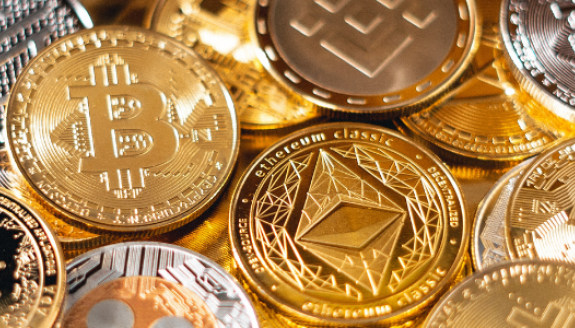
ESTIMATED TIME: 3 MINUTES
In this primer, you will be introduced to the difference between coins and tokens. This is a simple yet extremely important concept to understand.
- The terms coin and token are commonly, and improperly, used interchangeably.
- Coins are cryptoassets with their own blockchain.
- Tokens are cryptoassets built on another blockchain.
- Example: Bitcoin is a coin, and the U.S.Dollar Coin (USDC), an Ethereum-based stablecoin, is a token.
To make the distinction between coins and tokens, we’d like to take you back to the Series 65 exam. This is very similar to the difference we all had to learn between an RIA and an IAR. You cannot be an IAR without being registered with an RIA, but the RIA is a standalone entity that can house multiple IARs. Similar to RIAs, coins are any cryptoasset that has a standalone and independent blockchain. The most notable examples of these are Bitcoin and Ethereum. Tokens, on the other hand, do not have their own blockchain, but live as a ‘token standard’ of an existing blockchain. For example USDC, a cryptodollar, is a token (the IAR) that is ‘registered’ on the Ethereum blockchain (the RIA).
Tokens have a broader range of use cases compared to coins due to their functionality. For example, a token can be programmable, meaning they run on software protocols using smart contracts. This is how NFTs (Non-Fungible Tokens) are created. It’s also worth mentioning that tokens, unlike coins, are not intended to be used as money and thus are not part of the intended use of coins which are used for incentivizing blockchain security.
In another key distinction, coins need to be exchanged through cryptocurrency exchanges, while tokens can be exchanged through internal applications amongst each other. For instance “utility” tokens can be derived within an application’s ecosystem to reward behavior or pay fees. In another example, an investment advisor can have their own token that their clients can use to pay for financial planning fees or other advisory services.
Tokens, like coins, can represent value and be transferred between parties. In what many are referring to as the future, ‘tokenization’ tokens can also be designed to represent tangible assets like real estate or traditional assets like stocks. As the financialization of the cryptoasset space continues there will be continued growth of both the token and coin ecosystems. They will be the onramp providing interoperability between the legacy financial system and its impending digital future.
To learn more about cryptoassets, sign in or sign up for Onramp Academy here.
Onramp Academy is an evolving resource on cryptoassets for financial advisors. We understand that education is at the core of the financial advisor-client relationship, and that the most impactful financial advisors educate their clients, empowering them to make sound financial decisions. We created Onramp Academy to expose, educate, and empower financial advisors with the tools to confidently explore and introduce cryptoassets to their clients.
The Academy is supported by traditional legacy brands that advisors know and trust. In partnership with these firms, the Onramp team has curated a wealth of resources to assist advisors in becoming educated on the crypto economy and better serve their clients. The Academy consists of hand-selected written content, videos, podcasts, and other tools to help financial advisors sort through the minutia and get straight to the information that will directly impact their practice.
